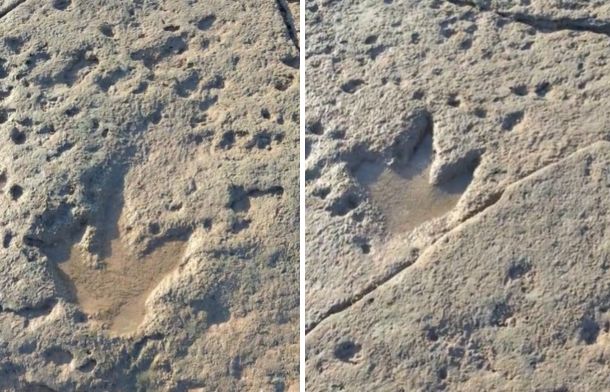When the Tides roll out, exposing the beaches of Broome in Australia, the archaeologists roll in. At their lowest tide point of the year, the waters recede to expose fossilized dinosaur footprints like nothing you’ve seen before.
Videos by InspireMore
In the video, we see a large theropod footprint. This three-toed (or tri-clawed) dinosaur is an unknown species. It might be an Australovenator, a medium-sized dinosaur similar to the velociraptor we saw in Jurassic Park. However, archaeologists have never recovered a skeleton or even partial remains to make a firm identification.
In addition to these unidentified dinosaur footprints, the year’s lowest tides reveal the footprints of more than 20 dinosaur species. Among the footprints are the largest prints ever found in the world! These super huge footprints measure over five feet nine inches across. Imagine them as an oddly shaped tub you could bathe in for size reference.

The fossilized dinosaur footprints near the beaches of Broome are said to be 120,000 to 130,000 years old. Although the footprints are the most popular attraction, the area’s geological formations also contain the fossilized remains of many other animals, plants, and invertebrates.
If you want to see the dinosaur footprints, there is an app for that. The Dinosaur Coast Track Guide app is available through the Dinosaur Coast Management Group, which also publishes an online, printable brochure. The Broome Historical Museum has displays and information about the area, including casts of the footprints. You can also visit Kronosaurus Korner for more information about the region, the dinosaur footprints, and other fossils. Several agencies offer tours to help visitors see footprints and other evidence of prehistoric life.
Please share if you wish someone would ask about your favorite dinosaur.
You can find the source of this story’s featured image here and here.
Want to be happier in just 5 minutes a day? Sign up for Morning Smile and join over 455,000+ people who start each day with good news.


